Many people in the industry believe that the future wearable smart watches and bracelets need to be developed in a more specialized and segmented application field. The sports crowd and health detection are two good directions. Then we may wish to understand the principle of optical heart rate monitoring through Apple Watch.
Apple watch heart rate monitoringHeart rate monitoring can be said to be one of the most revolutionary features of the Apple Watch. How is it achieved? Apple Watch uses LED green and infrared light, as well as two light sensors to detect heart rate. When it is at a low temperature below 15 degrees Celsius (59 degrees Fahrenheit), more accurate data is obtained by measuring the absorption of green light. In high-temperature environments, such as when the user is sweating in the gym, the surface moisture increases. Since more green light has been absorbed, it is more difficult to detect the green light reflected by the subcutaneous. At this time, the Apple Watch switches to the infrared mode.
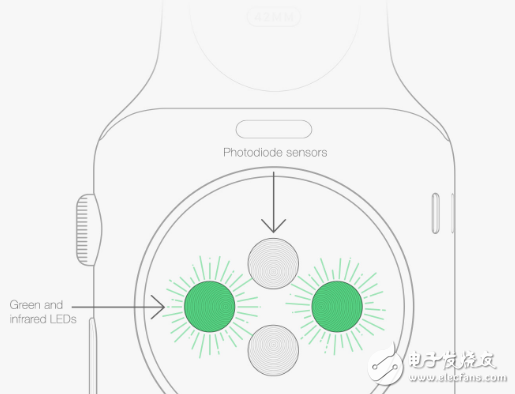
This optical technique for blood flow detection is professionally referred to as "photoplethysmography" (PPG).
Photoelectric volume pulse wave tracing PPGAs far as AppleWatch is concerned, when measuring the heart rate, the dial on the bottom will emit a green light, and it is better to keep the wrist on the side when measuring. The principle of optical heart rate measurement will be described in detail next.
The following two figures are optical heart rate sensors. Figure a is a photodiode in the middle of the LED when it is not illuminated, and Figure b is when the LED of the sensor is illuminated.
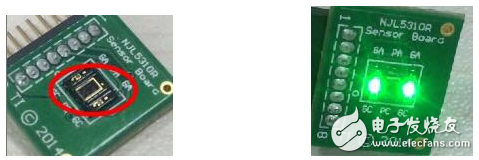
Figure a Figure b
So why can you measure your heart rate by LED light?
When the LED light is directed at the skin, the light reflected back through the skin tissue is received by the photosensor and converted into an electrical signal and then converted into a digital signal by AD, simplifying the process: light---> electric---> digital signal
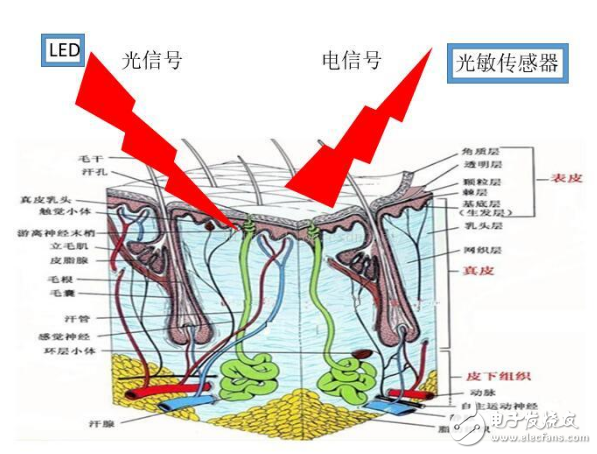
Why are most sensors using green light?
Let us first look at the characteristics of the spectrum, the wavelength from ultraviolet to infrared is getting longer and longer.

The reason why choosing green light as the light source is to take into account several features:
1. The melanin of the skin absorbs a lot of waves with shorter wavelengths
2. The moisture on the skin also absorbs a lot of light from the UV and IR parts.
3. Green light entering the skin tissue (500nm) -- most of the yellow light (600nm) will be absorbed by red blood cells
4. Red light and light close to IR are easier to pass through skin tissue than light of other wavelengths
5. Blood absorbs more light than other tissues
6. Green (green-yellow) light can be absorbed by oxyhemoglobin and deoxyhemoglobin compared to red light
In general, green light - red light can be used as a measurement source. In the early days, most of the red light is used as the light source. With further research and comparison, the green light as the light source obtains better signals, and the signal-to-noise ratio is better than other light sources. Therefore, most of the wearable devices now use green light as the light source. However, considering the skin condition (skin, sweat), high-end products will automatically use green, red and IR light sources depending on the situation.
Although I know the above characteristics, it is not enough to figure out why the heart rate, blood oxygen and other parameters can be measured by illumination.
The following figure explains the core principles
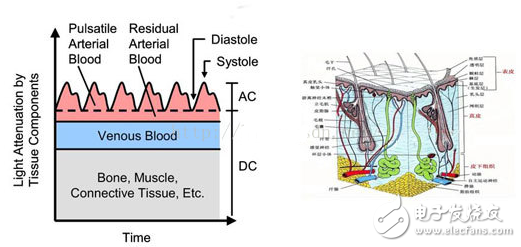
The light is attenuated as the light passes through the skin tissue and then back to the photosensor. Absorption of light, such as muscles, bones, veins, and other connected tissues, is essentially constant (provided that there is no large movement in the measurement site), but the blood is different. Because of the flow of blood in the artery, the absorption of light Nature has also changed. When we convert light into an electrical signal, it is because the absorption of light by the artery changes and the absorption of light by other tissues is basically unchanged, and the obtained signal can be divided into a DC DC signal and an AC AC signal. Extracting the AC signal can reflect the characteristics of blood flow. We call this technique Photoelectric Volume Pulse Waveography PPG.
Article reference Richard_LiuJH's blog
The rechargeable sealed Nickel Metal Hydride (NiMH) cell absorbs hydrogen in the metal alloy makeup of its negative electrode during charge. As the cell is discharged, the metal alloy releases hydrogen to form water.The use of the metal alloy is the underlying reason for the high energy density of the NiMH cell compared to other chemistries. NiMH batteries have a long cycle life and good storage characteristics.
Key Features:
Production technology is mature, quality is stable and pretty safe.
Low internal resistance.
Long cycle life over 500 cycles.
Friendly to the environment: No Cadmium, Mercury effect, Lead.
Application:
Cordless Telephone, Walk-Talkie, Two Way Radio,Electric Shaver, Electric Toothbrush,Emergency Lighting, Solar Lighting,
Metering Instruments, Security Systems,Electric Toys, Electric Power Tools, Medical Device,Portable Vacuum Cleaner

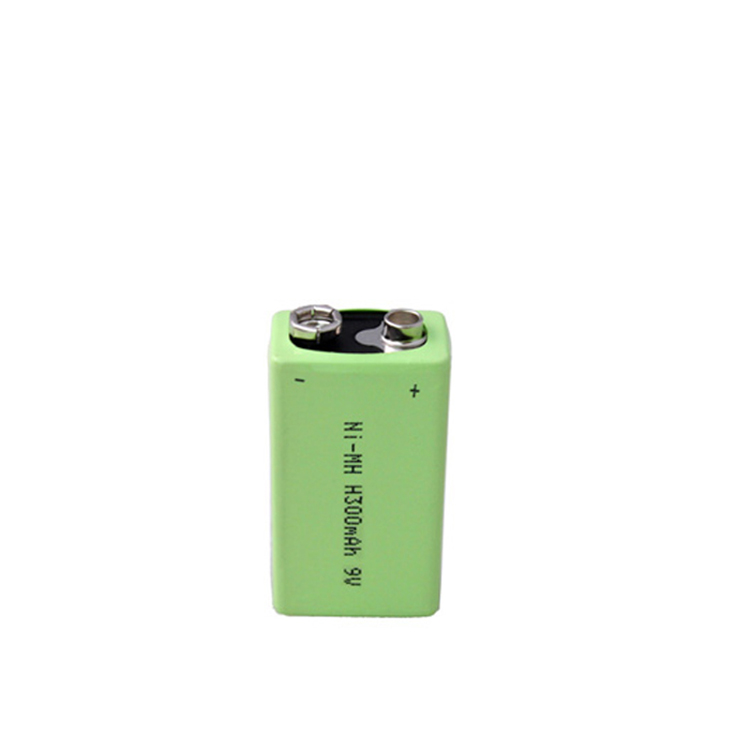

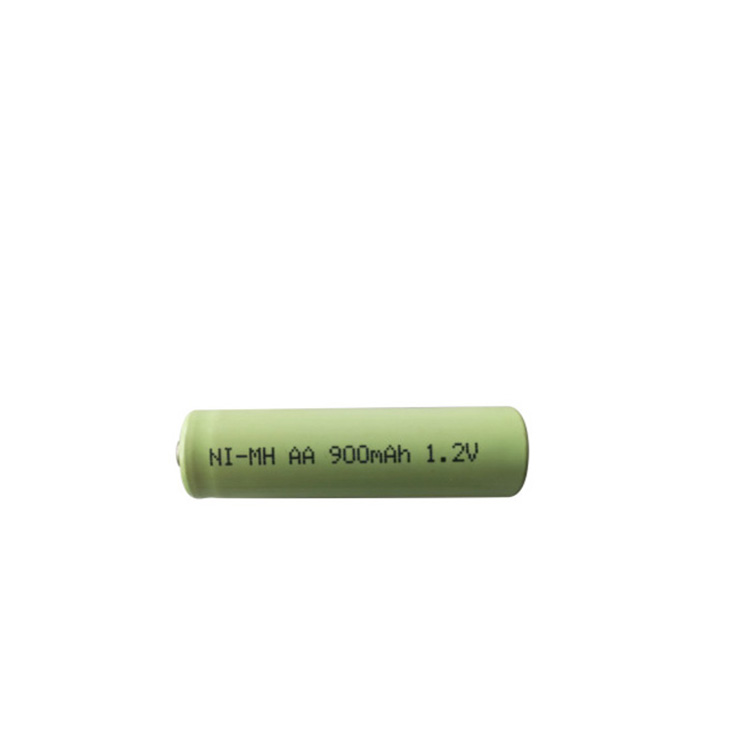
Ni-Hm Battery,Ni-Hm Aa 2200Mah Battery,Ni-Mh Button Battery Pack,Ni-Hm Battery Cell
Shenzhen Glida Electronics Co., Ltd. , https://www.szglida.com